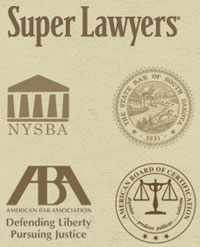Attributed with some hesitancy to F Scott Fitzgerald is the following, “There were no second acts in American lives” Let us see if this applies to contaminated properties. Brownfields are properties for which the expansion, redevelopment, or reuse is complicated by the presence or potential presence of a contaminant. Left unchecked, brownfields are a blight. Think of brownfields as a past tense activity. Something was done by man to or on the property that created an environmental problem. Government programs exist for which funding may be available for a brownfield property rehab.
Liability for brownfield sites is found in the Comprehensive Environmental Response, Compensation and Liability Act of 1980 (CERCLA). Based on available “reported” data, South Dakota has 151 known and documented brownfields. The number is probably larger however as there are likely others undetected and unreported. To label a property a brownfield, an environmental site assessment (ESA) must be completed. Brownfield rehab may be done to government as well as private properties. For governments looking to evaluate a possible brownfield site, a targeted brownfield assessment (TBA) is an option. TBA services include site assessments, cleanup options and costs estimates, and community outreach.
Brownfields are not superfund sites. Brownfields differ in that a brownfield is contamination ‘to a lesser degree.’ Superfund sites might be a candidate for big time cleanup. Brownfields are smaller deals, smaller property sites, with not so much money available, and with not as much public exposure of a property’s contamination. Your local church or school might be examples of brownfields.
While the cost for fixing brownfields can be high, the health and safety hazards of brownfields are real. Brownfields may include physical health hazards, such as uncovered holes, unsafe structures, and sharp objects. These properties also pose a risk to communities because of potential human exposure to hazardous chemicals. A brownfield site whether reported or not usually lowers the value of the property itself and can lower values of nearby properties.
If a county or city wants to cleanup a brownfield to allow for its future use no easy solution exists. The EPA awards competitive grants to government entities and certain non-profit organizations for cleanup activities but does not come riding in on a white horse to completely fix the problem. Government grants allocate funds mostly for assessing and classifying brownfields. Private property owners do not have quite as many opportunities for financial support for remediation as do government or non-profit sites. With all legal programs the devil is in the details; brownfield development agreements between parties and the government are intricate contracts detailing the legal responsibilities of the parties. An agreement will detail specific remediation steps concerning the contaminated property, describe the intended reuse of the property and disclose and justify the reuse technology proving that the rehab will leave the property suitable for the future uses identified.
Development of brownfield sites requires serious investigative due diligence of the property and its history. Brownfield development when completed with proper due diligence, I call it rehab, can lead to successful reuse of the site.
As stated, the EPA provides some financial assistance to eligible applicants through competitive grant programs. Additionally, funding support is provided under state and tribal programs through a separate mechanism. Let us consider a non-industrial city for illustration purposes. We will use Aberdeen as our example. The EPA in 2020 gave the city of Aberdeen a Brownfields Assessment Grant. Aberdeen’s foray into the world of brownfields provides a good sampling of the broad spectrum of the subject. EPA grant funds were to be used by the city to inventory and prioritize sites as a part of its assessment. Grant funds were also to be used to develop six cleanup plans and conduct area-wide planning activities. The Aberdeen priority sites under the grant included: the former Washington School Building (a building about as old as George Washington himself in which I was required to attend classes in high school. I could have told the powers-that-be way back then all about the building’s issues), a petroleum release site, a former dry-cleaning site, the Northwestern Railroad site which was a creosote pit, and the former Shopko retail site.
Yes, there are Second Acts in America – at least for some contaminated properties. One of my clients made a fairly good living cleaning up such properties. There ain’t no reason to be caught between the past and the present. Make something of what you got now and go forward.





